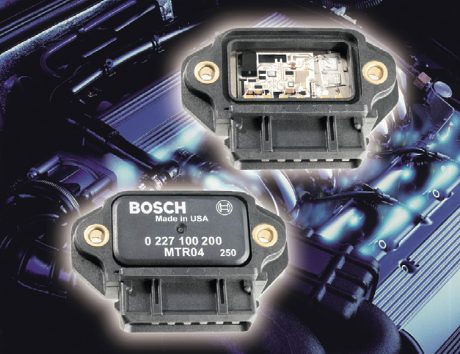Electronic ignition modules are devices used to control the ignition system in modern combustion engines. They are responsible for generating the high voltage electrical current that ignites the fuel and air mixture in the engine cylinders. Electronic ignition modules have replaced the traditional mechanical distributor and ignition points found in older cars and have significantly improved engine performance, fuel efficiency, and reliability.
Functionality of Electronic Ignition Module: Electronic ignition modules work by controlling the timing and intensity of the electrical spark that ignites the fuel and air mixture in the engine cylinders. They use a variety of sensors to determine the engine’s operating conditions, such as the position of the crankshaft and the temperature of the engine coolant. Based on this information, the module calculates the precise timing and duration of the electrical spark needed to ignite the fuel and air mixture in each cylinder.
Types of Electronic Ignition Module: There are two main types of electronic ignition modules: fixed timing and programmable timing. Fixed timing modules are pre-set at the factory to provide a specific ignition timing curve, which cannot be adjusted. Programmable timing modules, on the other hand, allow for more precise tuning of the ignition timing curve, which can improve engine performance and fuel efficiency.
Advantages of Electronic Ignition Module: Electronic ignition modules have several advantages over traditional mechanical ignition systems. Firstly, they provide more reliable and consistent ignition performance. Traditional ignition systems rely on mechanical components that wear out over time, leading to decreased performance and increased maintenance costs. Electronic ignition modules are more durable and less prone to wear and tear.
Secondly, electronic ignition modules are more fuel-efficient. By providing precise control over the ignition timing and duration, they can optimize the combustion process, leading to more complete fuel combustion and reduced fuel consumption.
Finally, electronic ignition modules are easier to diagnose and repair than traditional mechanical ignition systems. They provide real-time data on engine performance and can quickly identify issues with the ignition system. Additionally, they are often designed to be plug-and-play, making installation and replacement straightforward and hassle-free.
Conclusion: Overall, electronic ignition modules are a significant improvement over traditional mechanical ignition systems. They provide better ignition performance, fuel efficiency, and reliability. With the growing demand for more efficient and eco-friendly engines, electronic ignition modules are becoming an essential component in modern combustion engines.

Electronic ignition modules are typically composed of several components, including a power transistor, a triggering device, and a control module. The power transistor is responsible for amplifying the electrical current needed to create the high voltage spark that ignites the fuel and air mixture. The triggering device is used to initiate the spark, while the control module is responsible for receiving and interpreting sensor data and controlling the ignition timing and duration.
In fixed timing modules, the ignition timing curve is pre-set at the factory based on the engine’s specifications. This means that the module cannot be adjusted by the user or mechanic, and the engine’s performance is limited to the predetermined timing curve.
In contrast, programmable timing modules allow for more precise tuning of the ignition timing curve. This is done by adjusting the timing and duration of the electrical spark based on engine data collected from various sensors. This can optimize engine performance, fuel efficiency, and emissions.
One of the primary advantages of electronic ignition modules is their ability to provide more reliable and consistent ignition performance. Traditional mechanical ignition systems rely on a distributor and ignition points that wear out over time, leading to decreased ignition performance and increased maintenance costs. Electronic ignition modules, on the other hand, are more durable and less prone to wear and tear, resulting in more consistent ignition performance.
Another advantage of electronic ignition modules is their ability to optimize the combustion process, leading to improved fuel efficiency and reduced emissions. By providing precise control over the ignition timing and duration, electronic ignition modules can ensure that the fuel and air mixture is ignited at the optimal time, resulting in more complete fuel combustion and reduced fuel consumption.
Finally, electronic ignition modules are easier to diagnose and repair than traditional mechanical ignition systems. They provide real-time data on engine performance and can quickly identify issues with the ignition system. Additionally, they are often designed to be plug-and-play, making installation and replacement straightforward and hassle-free.
In conclusion, electronic ignition modules are an essential component in modern combustion engines. They provide better ignition performance, fuel efficiency, and reliability than traditional mechanical ignition systems, making them an excellent choice for anyone looking to improve their engine’s performance and reduce maintenance costs.




